Software documentation isn’t an add-on or a nice-to-have feature.
Your users need to have software documentation to learn about your product, its features, how it can meet their needs, and how to use it.
In other words, it is a vital part of your software product.
There are many types of software documentation for different purposes, so if you want to make all of them the best they can be, you have a challenging task in front of you.
That’s why in this article, we bring you examples of software documentation that can inspire you to create outstanding resources.
Let’s start with a user manual.
User Manual
A user manual is a comprehensive document showcasing all your software product’s features and functions.
It aims to teach your customers how to use your product and get the most out of it, so it’s crucial that it is detailed, easy to understand, and simple to use.
A great example of a user manual that has all those attributes is Stripe’s user manual.
The documentation of this payment processing platform is well-known among customers, and it’s often revered as a great resource, as this Reddit user below points out.

Source: Reddit
Stripe organized its user manual by products, which are grouped into categories like Payments, Prebuilt Components, Business Operations, and Financial Services.
Below, you can see some of the categories of their user manual.
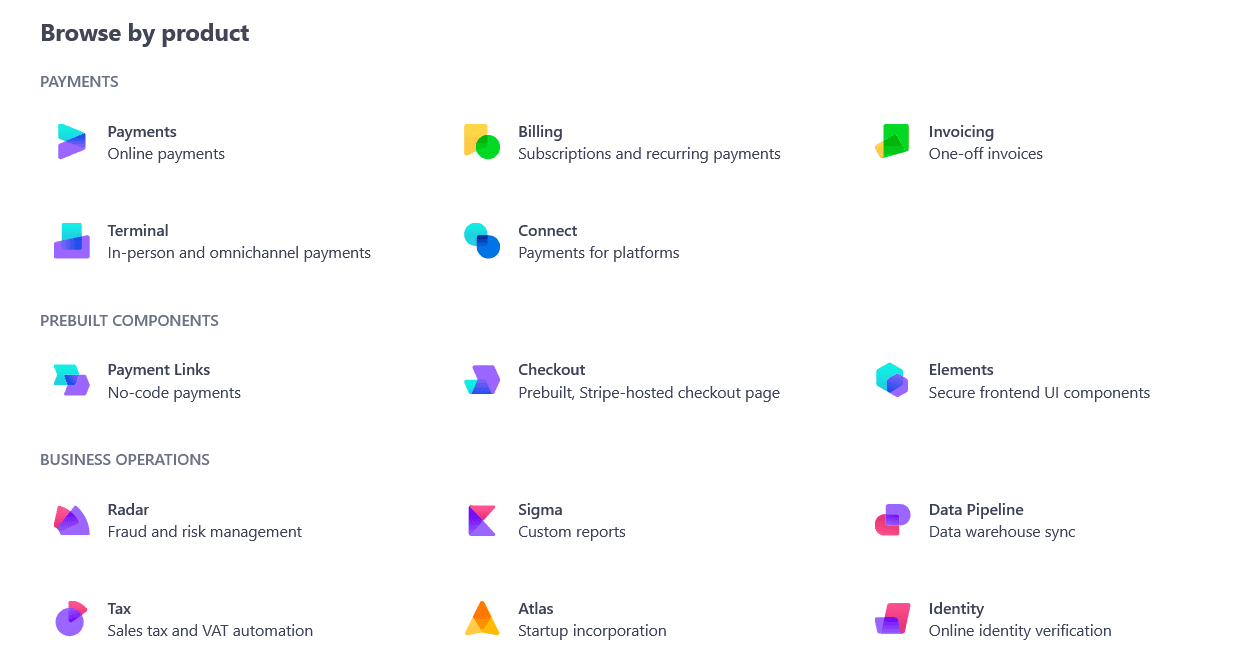
Source: Stripe
As you can see, there are many different categories, each with detailed user guides for every aspect.
Separating information like that is a great way to ensure you don’t overwhelm your users.
A user manual should be an all-encompassing source of information, but that doesn’t mean you should swamp your readers with all of it at once.
In addition to categorizing information, Stripe wisely includes several navigational elements to make it easier for users to find what they need.
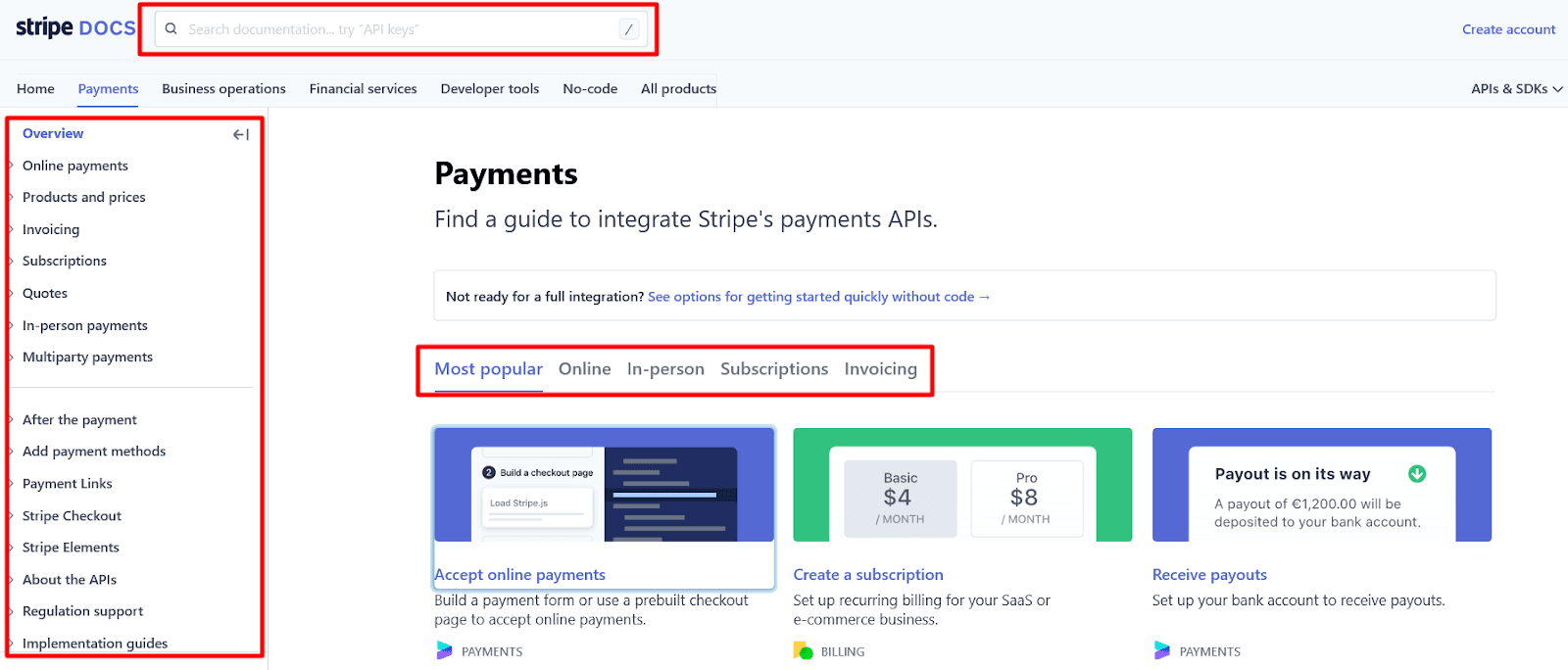
Source: Stripe
For instance, above, you can see the main page of the Payments guide.
On the left-hand side, there’s a table of contents with every category and subcategory in that guide.
You can also browse guides by filters like “most popular”, “online”, etc.
And if you’re looking for something specific, there’s a search bar at the top of the page for quick and efficient use.
Regardless of whether you have a complex software product like Stripe or an app with a couple of features, your user manual should be a single source of truth that is as detailed as possible, but also well-organized to provide a great user experience.
Here's a quick read recommendation about what is an application user manual and how to write one.
Quick Start Guide
Providing a comprehensive resource like a user manual is a non-negotiable for software products. However, users often want to start using the product in as little time as possible.
And when they don’t want to go through every detail of your product and want to just jump into it, a quick start guide is a type of documentation precisely for those occasions.
A quick start guide is like a user manual’s more approachable relative.
Its purpose is to provide basic information about the product as a first step for new users who don’t want to explore a vast resource.
Airtable, a cloud collaboration platform, created a quick start guide with that purpose in mind. It has six steps and aims to teach users the basics in 10 minutes.
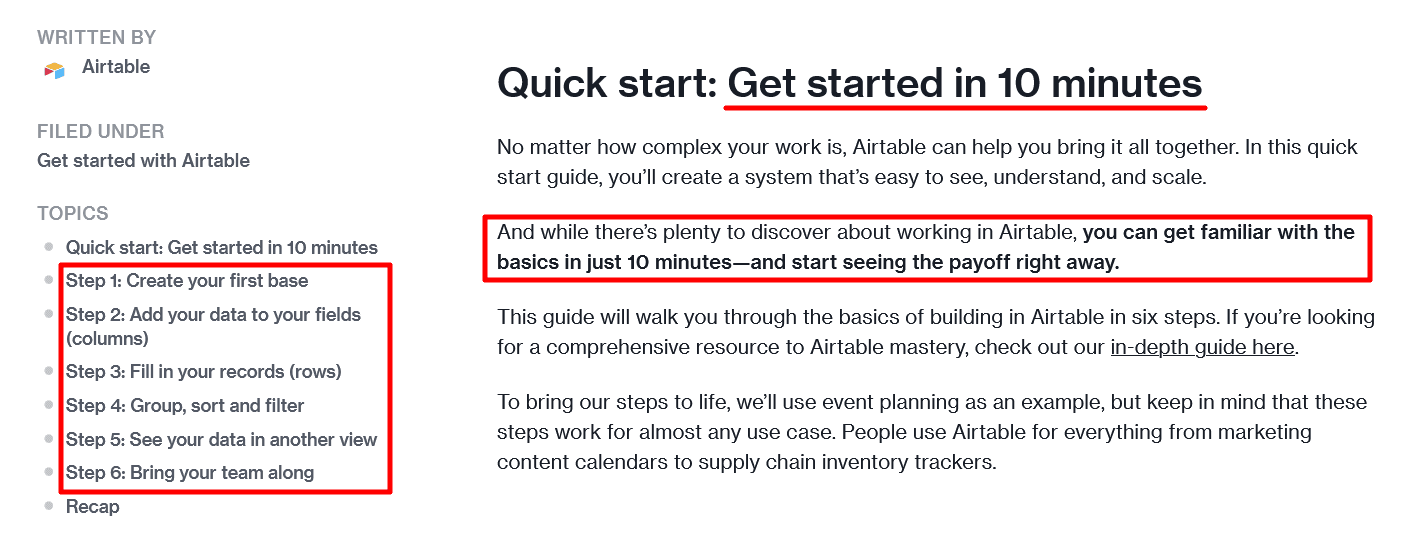
Source: Airtable
Airtable’s team knows that customers want to see if the product has value for them and meets their needs as soon as possible.
To accelerate learning, they packed their quick start guide with lists, screenshots, GIFs, and other elements that relay information efficiently.
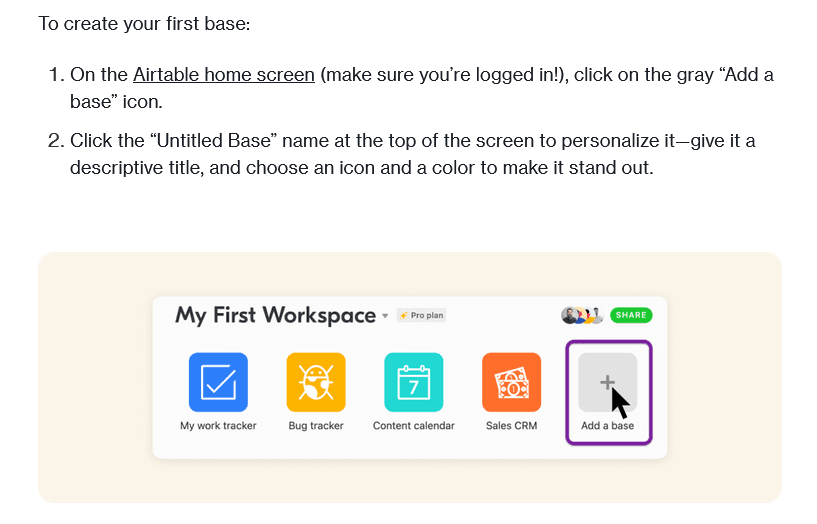
Source: Airtable
Also, Airtable’s quick start guide isn’t just a collection of generic instructions to get users started. Writers used the example of event planning to showcase the product’s features.
Whether readers want to use Airtable for that purpose or not, they get to see the product in action on an actual task.
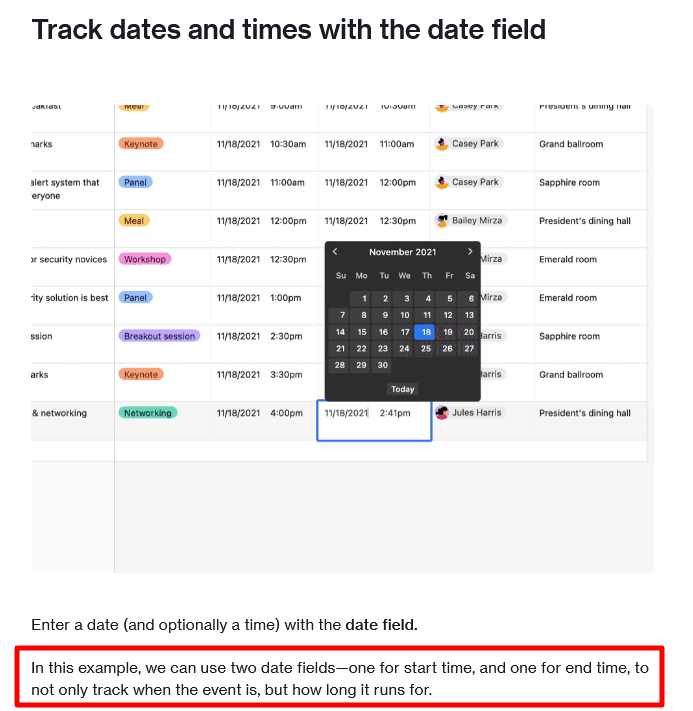
Source: Airtable
And after 10 minutes, users have grasped the basics of using Airtable—they’ve learned how to create bases, add data to fields, fill records, group, sort, filter, etc.
If you manage to show the value of your product in a short time frame like that, you’ve created a great quick start guide.
How-to Guide
Software products are, more often than not, pretty complex. A user will most likely need instructions on performing a specific action or using a particular feature.
That’s where how-to guides come in.
How-to guides provide step-by-step instructions about a specific process from start to finish.
When we talk about software products, that can be anything, from installation to using any feature, and everything in between.
For example, if you use Basecamp, a project management software, you have a sizable collection of how-to guides at your disposal.
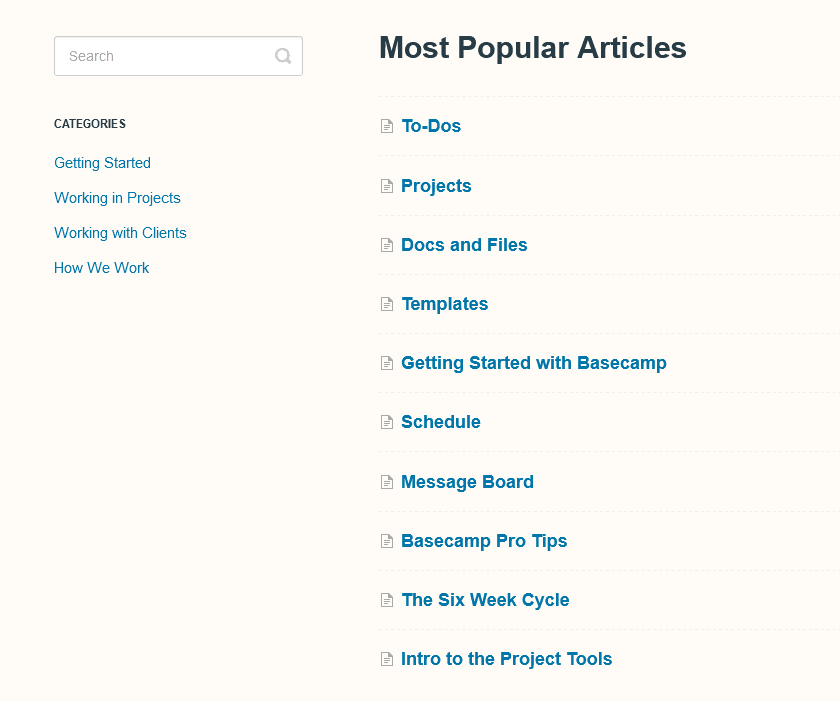
Source: Basecamp
In the screenshot above, on the left-hand side, you can see four main categories of how-to guides, and on the right-hand side, the most popular ones.
The point of how-to guides is to provide simple instructions so that customers can utilize the product’s full potential.
That’s why Basecamp’s team ensured they covered every detail of their software with a guide.
For example, below, you can see how many guides there are just in the “Projects” category.
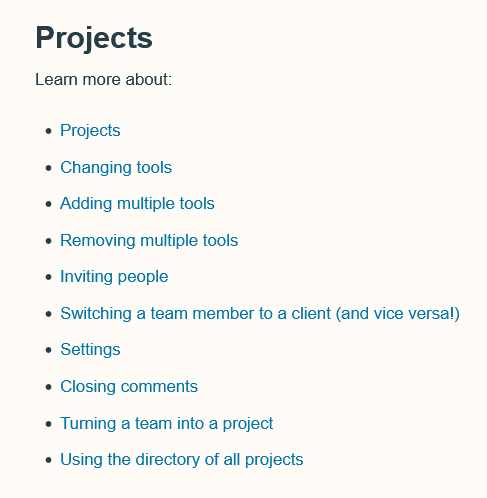
Source: Basecam
When it comes to the style of the how-to guides themselves, Basecamp subscribes to the “less is more” approach.
That means they use many visuals like screenshots to convey instructions instead of lengthy explanations.
For instance, instructions for adding an event to an external calendar contain only three sentences, one of which is an introductory rhetorical question.
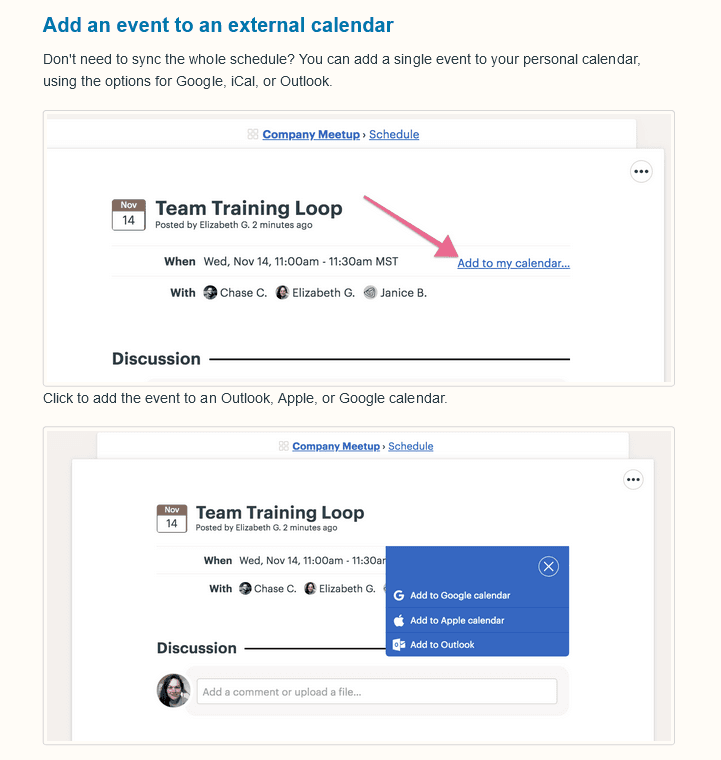
Source: Basecamp
But that doesn’t deprive their users of any crucial information.
Screenshots of the steps they need to take to perform that action are excellent vehicles for straightforward instructions.
That’s key when creating how-to guides. The instructions should be clear and direct to make it easy for users of any skill level to accomplish whatever they need.
FAQ
Some topics don’t require elaborate explanations or in-depth help articles. For those instances, having an FAQ section is valuable.
FAQ stands for “Frequently Asked Questions”, which is precisely what such a section contains—questions that users commonly ask about your product and, of course, answers to them.
An FAQ section provides quick support to people who encounter problems with using your product or who are simply curious about a product before becoming users.
It also spares your customer support team from answering simple questions that come up repeatedly.
You can have a brief FAQ section with a dozen or so questions and answers, but you can also go in the other direction, as AdRoll did.
This digital marketing platform has an FAQ section with over a hundred questions categorized into topics.
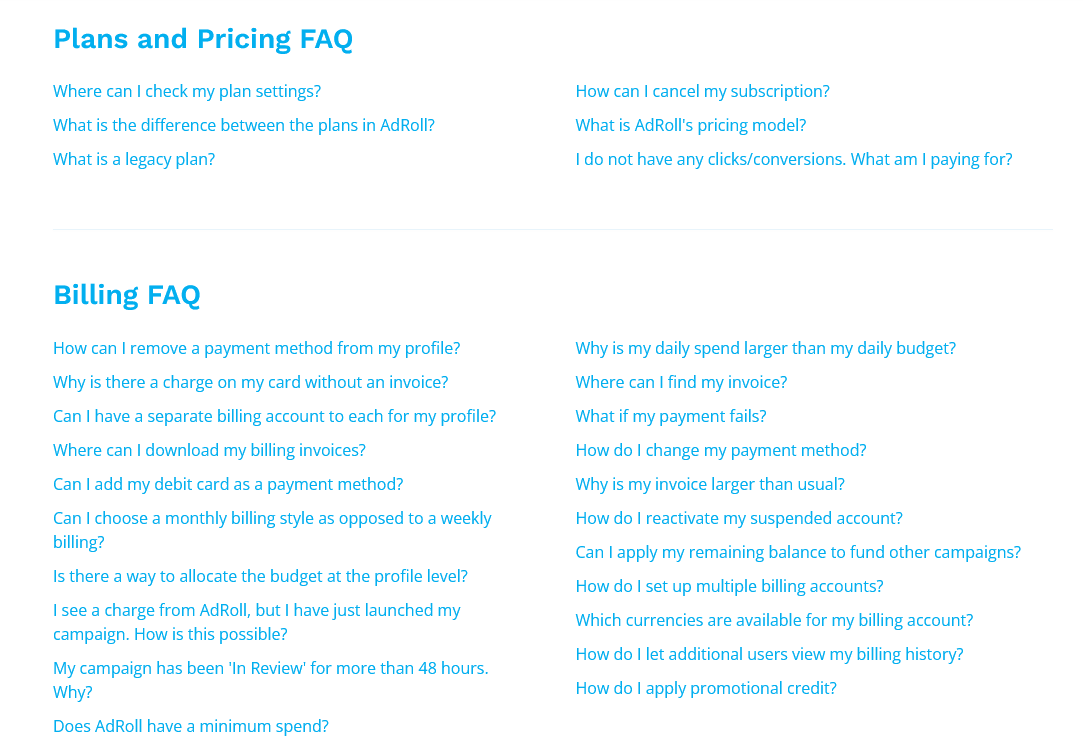
Source: AdRoll
Above, you can see two of the 12 categories of questions that AdRoll compiled.
However, they still manage to keep it simple when it comes to the content of their FAQ section.
Users still get what they expect; a straightforward answer that’s a few sentences long at most.
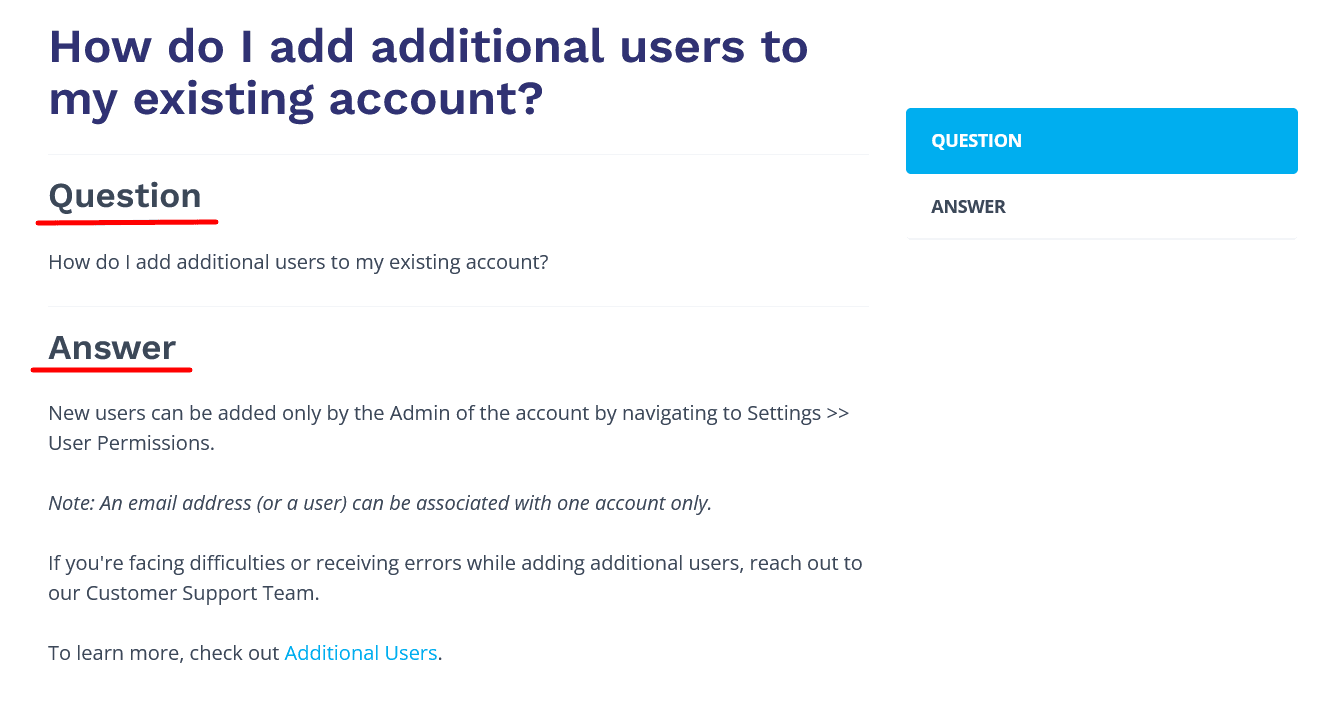
Source: AdRoll
Although FAQ is essentially a simple form of software documentation, you can add certain elements to it.
For instance, you can use visuals:
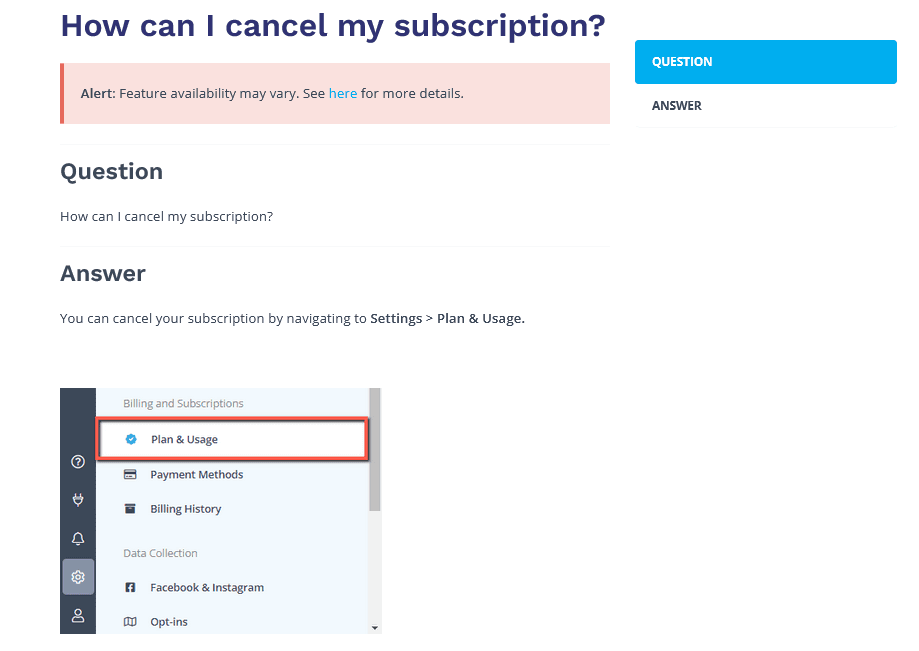
Source: AdRoll
Also, if you have a rich collection of questions and answers like AdRoll does, you can connect them with links.
AdRoll placed links to related and recently viewed questions at the bottom of every page to make finding information easier.
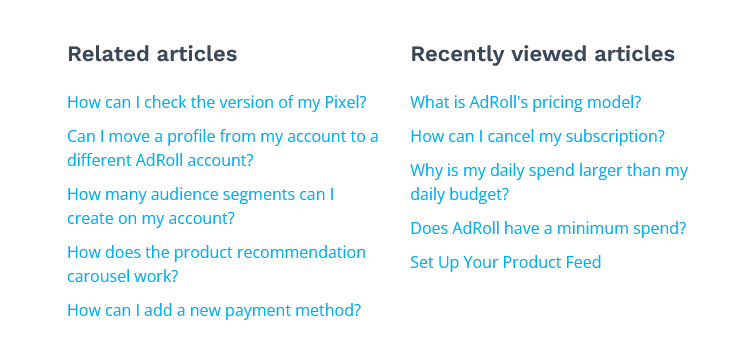
Source: AdRoll
In a nutshell, FAQs can be a very valuable type of software documentation.
AdRoll’s example illustrates how it can be comprehensive and simple at the same time, so it would be a good idea to follow their lead.
Troubleshooting Guide
There is no perfect software product that runs flawlessly all of the time. Even the highest quality products have an occasional bug, glitch, or error.
And when your customers encounter one of them, having a troubleshooting guide is very helpful. That way, your users can solve the problems themselves and resume their work as soon as possible.
Most troubleshooting guides don’t aim to solve every conceivable problem with the product. Here's a great reading recommendation for you about step-by-step process of writing troubleshooting guides for SaaS products.
Instead, they focus on the most common ones that the users can deal with without help from the support team.
You can see that in Slack’s troubleshooting guide.
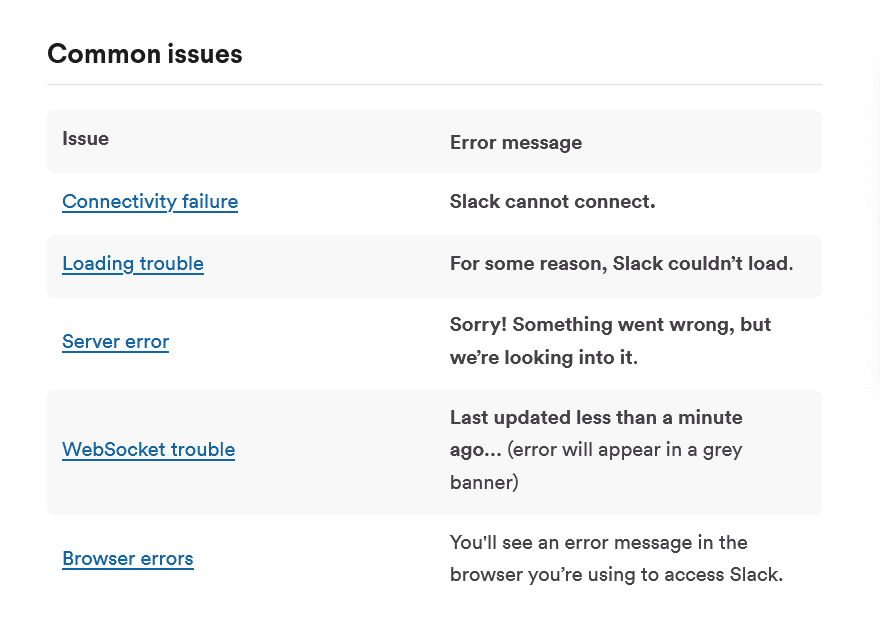
Source: Slack
Slack’s team created a concise troubleshooting guide with five issues and solutions.
The layout for every problem in the guide is the same—they describe the issue and provide a step-by-step guide on how to solve it.
For example, if Slack can’t connect, the troubleshooting guide first explains what the issue might be.
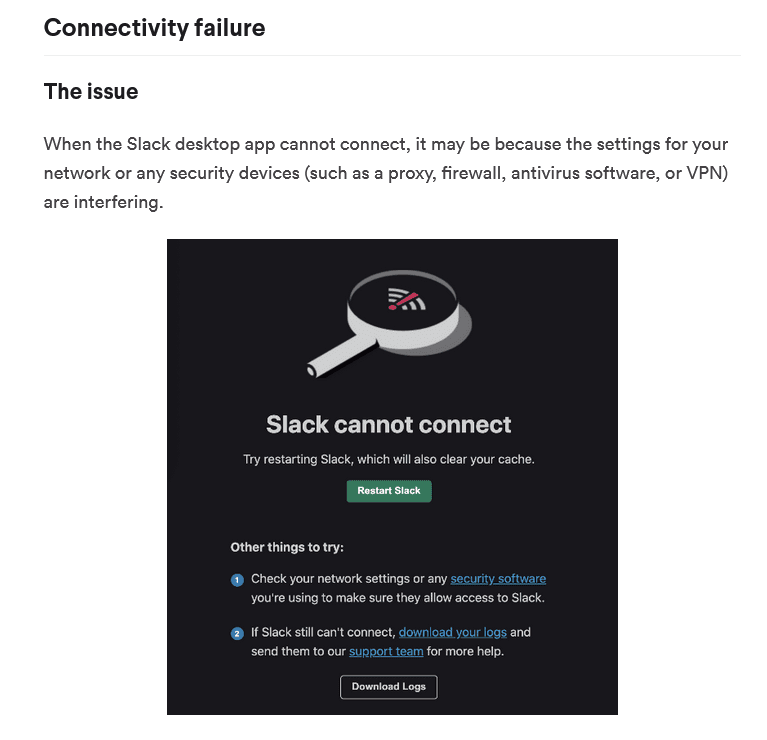
Source: Slack
After that part, users get a detailed guide on how to resolve the issue.
In the example of a connectivity failure, there are only two steps, but the second step is broken down into separate actions.
The point is that there’s no guesswork in troubleshooting guides, and every instruction should be detailed and clear.
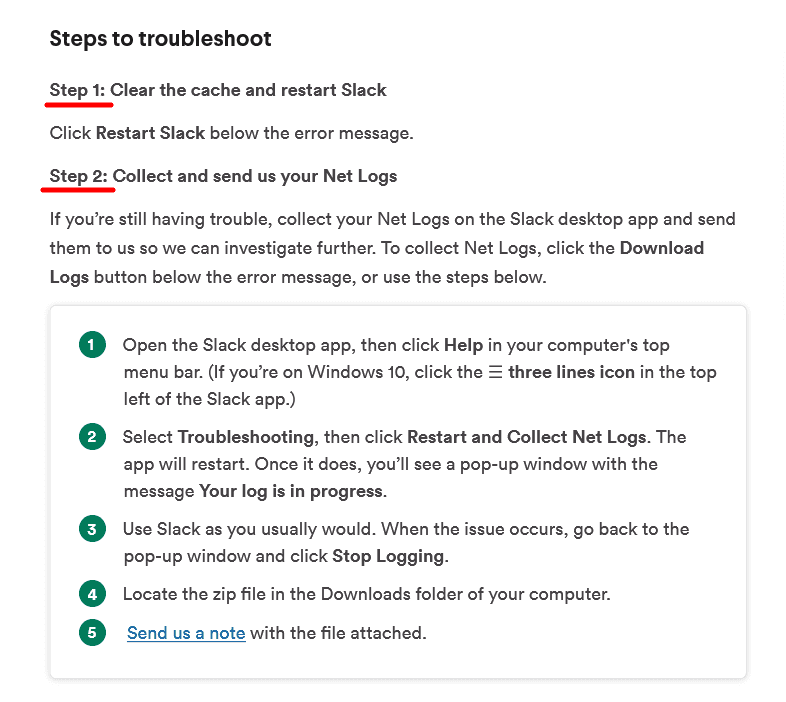
Source: Slack
If you have a software product with versions for multiple platforms and operating systems, you should remember that troubleshooting might be different for each version.
Slack didn’t forget that and included a convenient feature in their troubleshooting guide—tabs with different instructions.
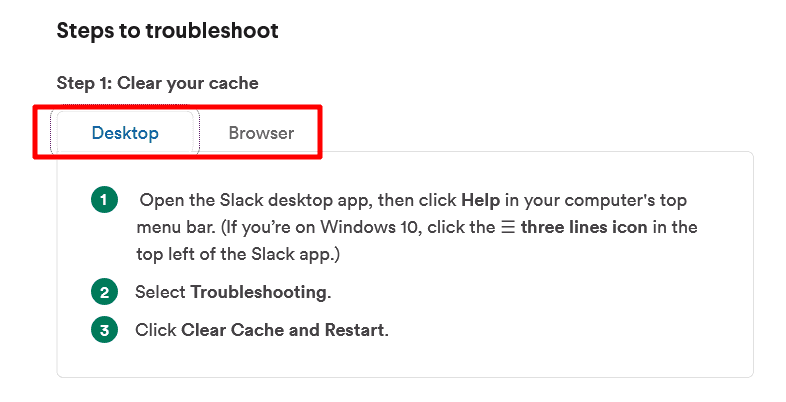
Source: Slack
The screenshot above shows tabs for a desktop and a browser version of their product. Users can easily switch between them with one click.
Slack’s troubleshooting guide is a great example of what that type of software documentation should offer users—brief, precise, and accurate information that helps solve the most common issues.
Knowledge Base
A knowledge base for your software product is an essential type of software documentation.
Every piece of information about your product, every guide, tip, problem solution, recommendation, or any other type of content related to your product should be in a knowledge base.
It’s a comprehensive library of information your customers can use at any time for whatever need they have regarding your software product.
If that sounds complex to put together, you’re not mistaken. However, if you need inspiration on that front, you can look at Asana’s knowledge base.
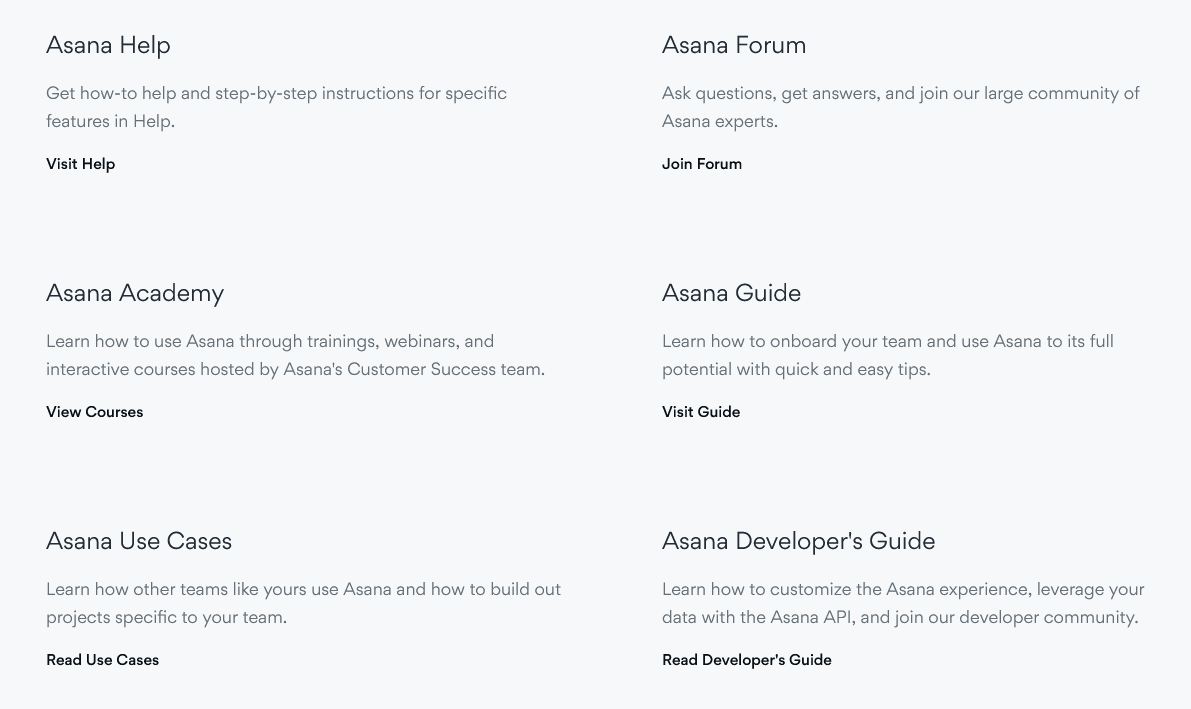
Source: Asana
As you can see, the users can go to Asana Help, Asana Academy, Asana Guide, etc.
That amount of content can be overwhelming if you don’t organize it well. How does Asana do it?
Let’s see the Asana Guide section:
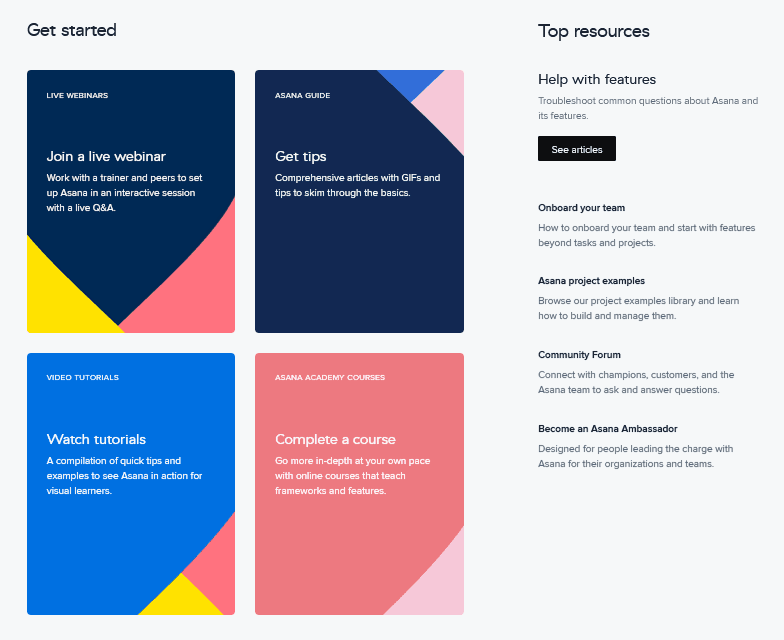
Source: Asana
Asana’s team structured their Guide section into four main parts.
For example, the “Get tips” subsection is essentially a quick start guide.
The users can learn the basics of using this complex project management platform with the help of visually rich instructions.
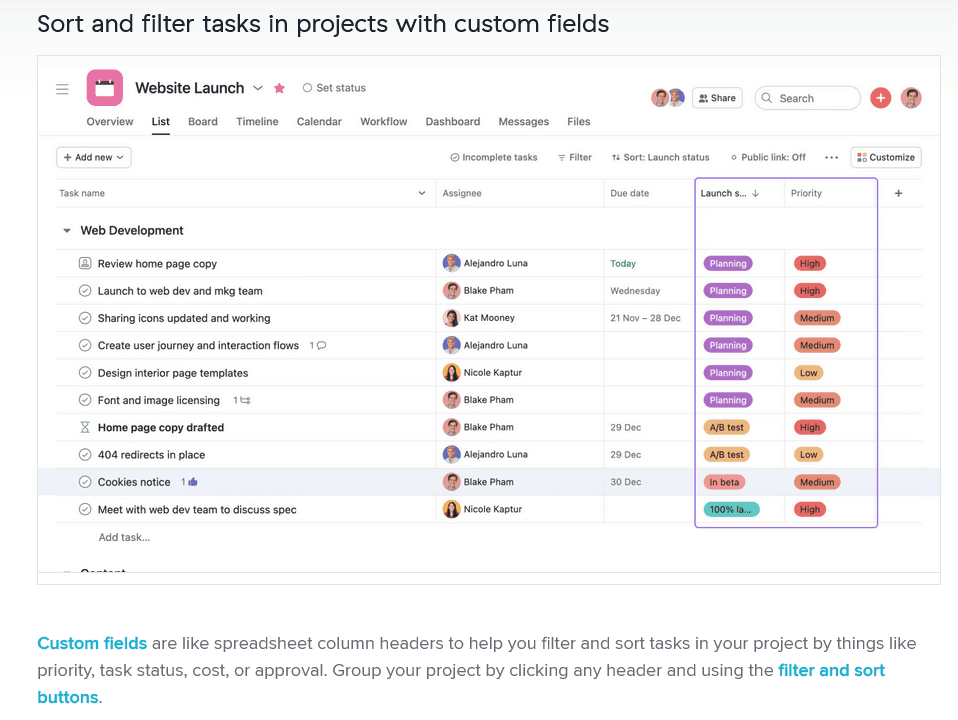
Source: Asana
Asana’s knowledge base also provides users with many video tutorials in their “Watch tutorials” section.
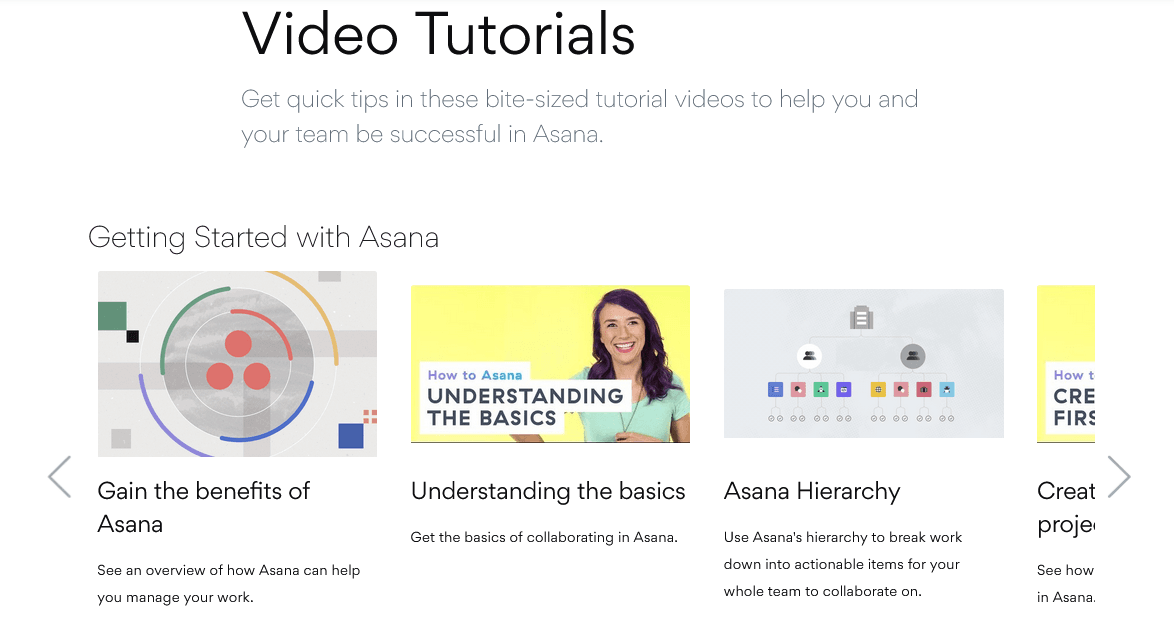
Source: Asana
Also, there are courses the users can take to master the product.
Asana Academy offers courses grouped by topic and by level of knowledge, so both beginners and advanced users can find something for themselves.
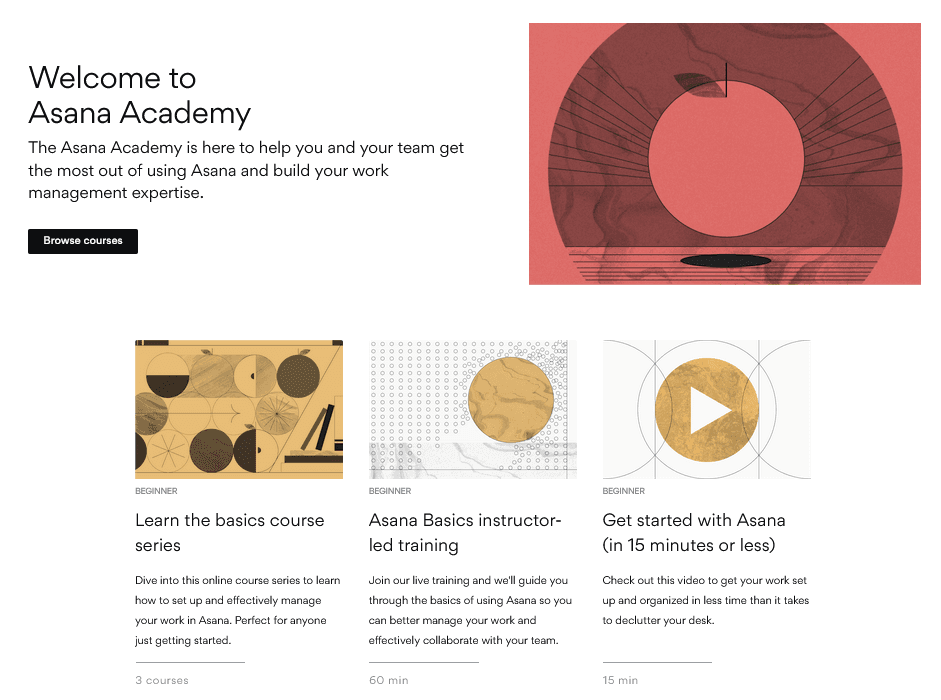
Source: Asana
The point isn’t to copy the way Asana organized their knowledge base.
Regardless of how you provide users with knowledge of your product, ensure that you include as much information as possible.
That way, you make it easier for them to learn about the product and adopt it as a part of their everyday routine.
API Documentation
API documentation is a considerably different type of software documentation from the ones we’ve discussed in this article so far.
It’s aimed primarily at developers and not the wider audience.
A reader needs to have a certain level of technical knowledge to understand and use it, but that doesn’t mean you shouldn’t create user-friendly API documentation.
If you want a great example of how to do that, Twilio provides API documentation that high-level software developers publicly praise online.
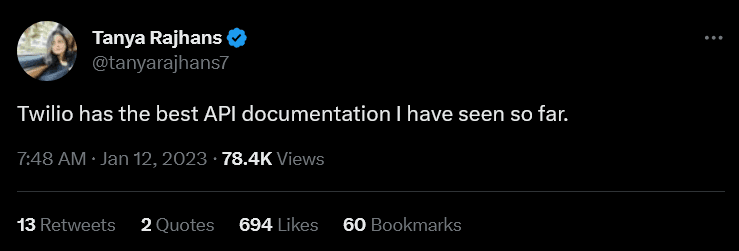
Source: Twitter
So, what makes Twilio’s API documentation so good?
One of the elements is its usefulness.
Twilio’s team didn’t just put together a collection of API references with a few convoluted paragraphs of text that you need a technical glossary to understand and call it a day.
Their documentation is written in plain language, contains examples, and takes the time to explain concepts to users.
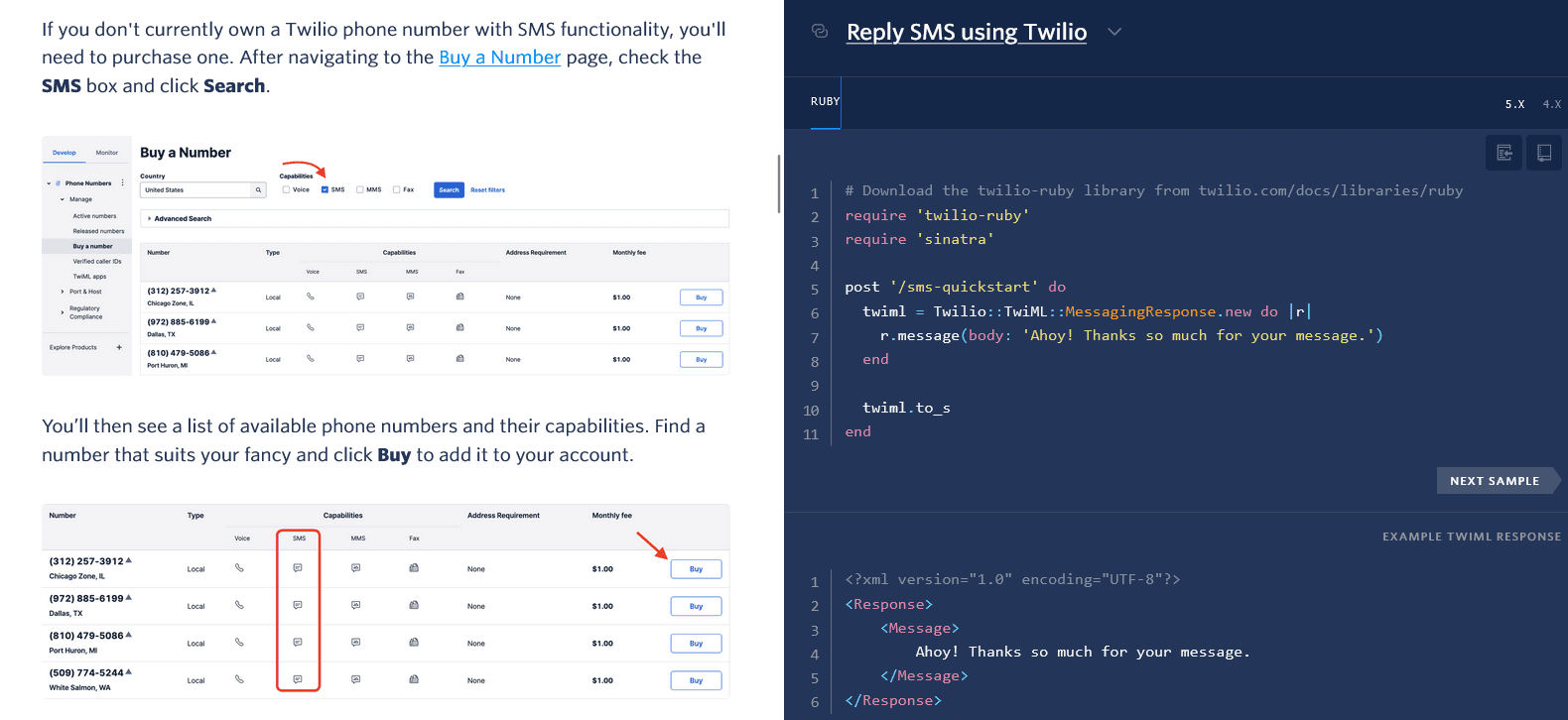
Source: Twilio
Above, you can see how they also use visuals like annotated screenshots to make instructions as clear as possible.
Also, in all of Twilio’s API documentation, users can find code examples.
The documentation is split into two sides—the left-hand side contains text, and the right-hand side samples of code users can examine.
Given the significant amount of content in Twilio’s API documentation, they opted for a step-by-step approach to unveiling it.
In other words, when a reader gets to the end of one step and is ready to continue, they can click on a button that indicates what they’ll learn next.
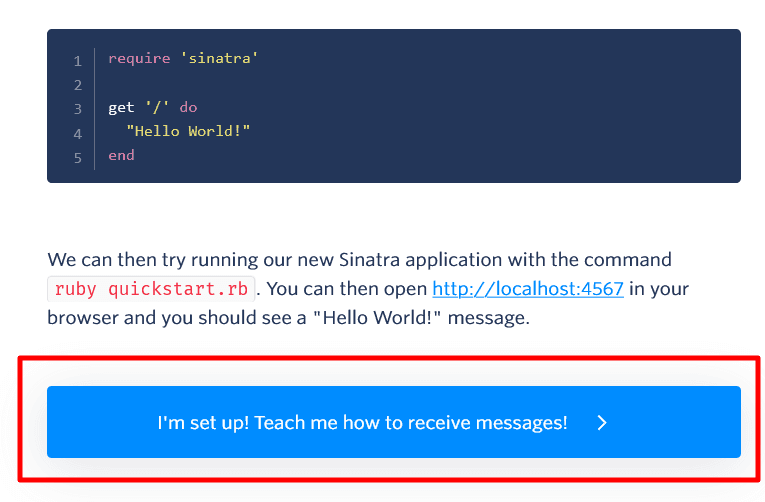
Source: Twilio
When you put together the understandable language, plenty of visuals, code samples, and a step-by-step approach, it’s no wonder Twilio’s API documentation is considered one of the best in the industry.
SDK Documentation
Continuing with the software documentation aimed at developers, software engineers, and other technical experts, SDK documentation is another crucial type of documentation you should create with care.
As you probably already know, SDK stands for “Software Development Kit”, a set of tools for building software.
Given that it includes multiple tools like debuggers, code libraries, and APIs, to name just a few, the documentation for it can be complex.
However, with logical structure and good writing skills, you can make SDK documentation very helpful.
Loom, a video communication software, divided its SDKs into recordSDK and embedSDK.
That’s the first thing they explain in their documentation before providing a code sample customers can use to install both SDKs.
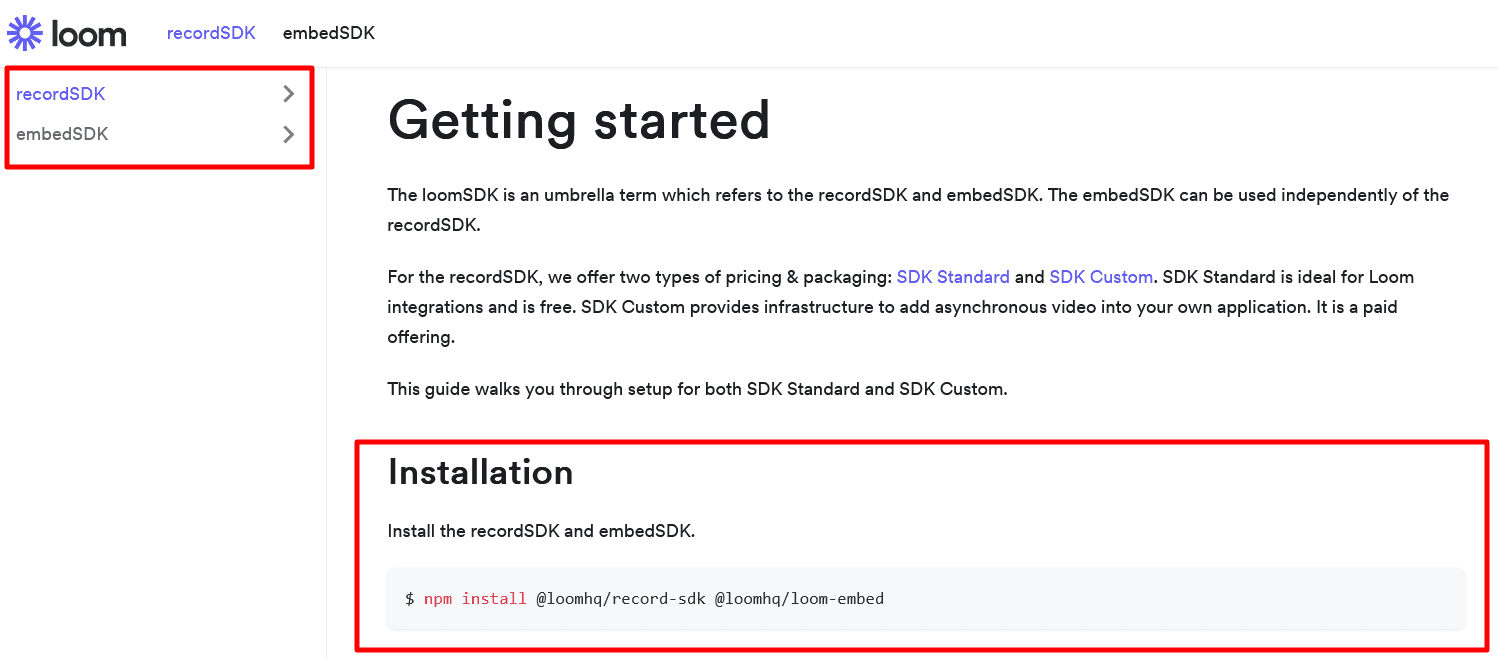
Source: Loom
Loom’s SDK documentation isn’t filled with technical jargon that only experienced developers can understand.
On the contrary, the writers used simple language, short sentences, and paragraphs to make such highly technical documentation accessible to professionals of all skill and experience levels.
For instance, you can see that when you read the highlighted paragraph below.
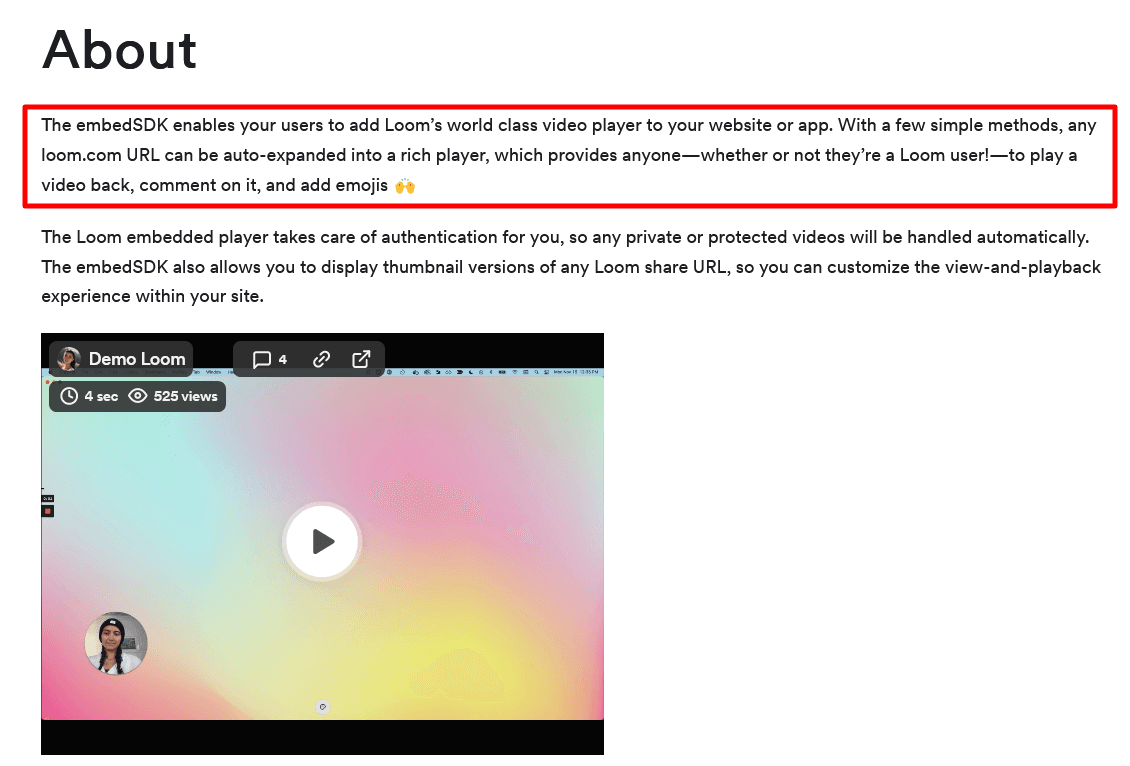
Source: Loom
It explains in simple terms what the embedSDK does, how it works, and the value you can get by using it.
On the other hand, Loom’s team didn’t neglect to provide the technical content in SDK documentation, like code samples.
The users can find three different code samples thanks to the tabs feature that makes switching between them a breeze.
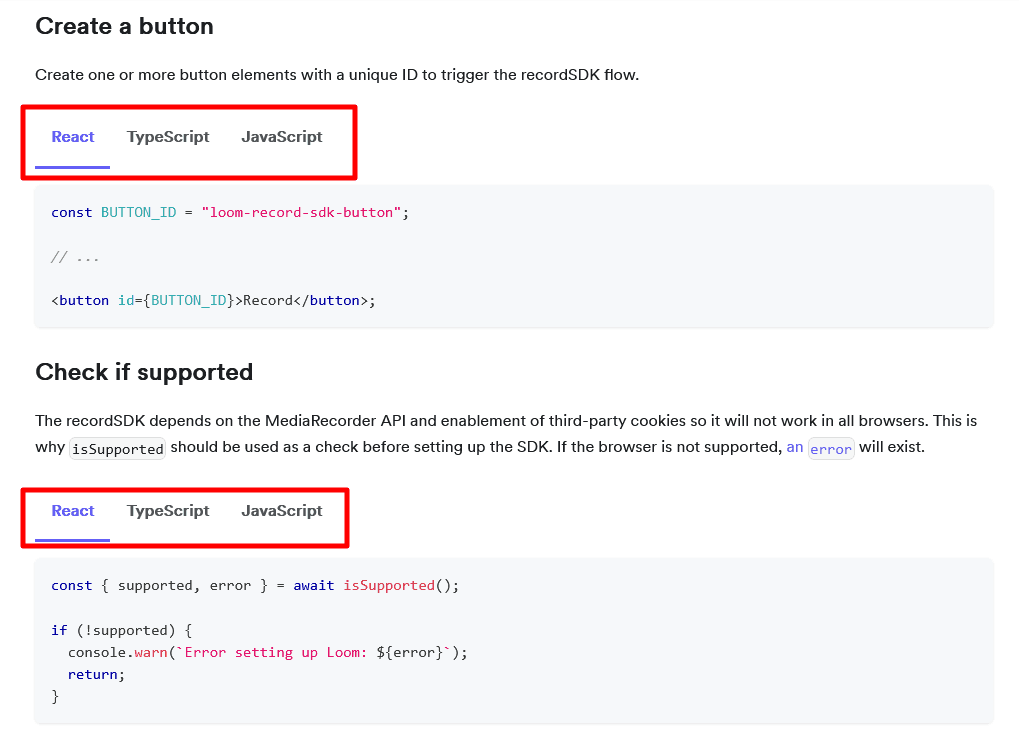
Source: Loom
To sum up, Loom’s SDK documentation is an excellent example of a highly technical resource that is less intimidating to readers because of the writing team’s smart choices.
Conclusion
Speaking on behalf of the entire Archbee team, we hope we’ve ignited a spark within you with the examples from this article to create great software documentation.
The examples we’ve shown you aren’t necessarily perfect in every way.
Still, they all have elements that can inspire others to create documentation that will be as helpful as possible to users.
After all, if your users are happy with your documentation and find value in it, they’re most likely also happy with your product.
Providing them with excellent documentation is a path to success, so why not take it?
FAQ
Frequently Asked Questions
Because it helps users succeed faster and with fewer roadblocks. Clear, well-organized docs teach what the product does, how to use it, and how it solves their problems. Good documentation: - Shortens time-to-value with step-by-step guidance - Enables self-serve support, reducing the need to contact your team - Helps users discover features they might otherwise miss - Provides a single, up-to-date source of truth they can trust - Supports different learning styles with visuals, examples, and videos The result is higher adoption, fewer errors, and a better overall product experience.



